A cycling legend if ever there was one, Rik Van Looy rarely gives interviews, but he gave one to Chris Sidwells a few years ago. This is what was said.
Words: Chris Sidwells
Photos: Cycling Legends Collection, Offside, Presse Sports
Rik Van Looy won every single-day classic on the calendar, at least as classics were defined in his day. Nobody else has ever done that, not Eddy Merckx, not Fausto Coppi, not Tadej Pogačar – no one.
Rik Van Looy is the single-day road race N of one.
He was a fierce competitor, high-handed in his dominance, with 492 victories in a professional career that lasted nearly 20 years. They called him the Emperor of Herentals, after the imperious manner in which he won and Belgian town where he lives. Where I was granted an audience.
He’s still recognisable as the man you see in the photographs ripping the legs off everyone, hammering across cobbled roads, flattening brutal climbs and laying waste to the peloton. Age might have lined his face and thinned his hair, but he’s still fit, lean, and extremely sharp.
Antwerp
Rik is short for Henrik, and he was born not far from Herentals in Grobbendonk. Van Looy has one brother, and although his childhood was tough by today’s standards he doesn’t think it was exceptional for the time.
His mother died when he was quite young, which meant he had a fairly free rein. “I often skipped school,” he told me. But it wasn’t to hang around street corners or be a nuisance, it was to earn money. Rik Van Looy would reveal later in this interview that money is very important to him. Not so much for what it buys, but for the respect it confers.
“I had this paper round,” he continued: “500 to 600 newspapers delivered daily, and I did it on a bike weighing 25 kilograms. It took me from six in the morning until midday, so seeing as I’d already missed the morning at school, sometimes I decided to miss the afternoon as well.”
Introduction to racing
Those afternoons were Van Looy’s introduction to bike racing. “I had a neighbour who was a pro in the Belgian kermesses, and I would go to his races with him in his car. When we got there I’d take his spare bike and ride round the circuit in the opposite direction while he raced. I tried to do as many laps as I could before he finished.
“Doing that and my newspaper round built me up,” he told me, and to emphasise the point he put his hands around one of his thighs. Age hadn’t shrunk them that much.
Van Looy loved the atmosphere at those bike races, it was certainly better than the classroom, and his neighbour had a car and some trappings of success. Maybe racing could be Van Looy’s way to earn money without studying. He had to have a go.
He cobbled together a bike and entered his first race. With his record you might think he was an instant success, but he wasn’t. “I started racing at 15 with the nieuwelingen, the 15 to 16 year-old age group, but in my first race I was lapped five times in 20 laps. I only kept going because my father said that I had to complete it,” he explained.
It didn’t take long to break through, though. Van Looy won 16 races in a row the following year, and cycling wasn’t his only sport.
“I loved football, and I combined playing football with cycling until after the start of my pro career. In fact the last time I played football was for the Belgian military team. That was just after I turned pro in the autumn of 1953.
“I was seventh in Paris-Tours then I went straight into the Belgian army to do my national service. I played my last game of football in the army,” he says.

Teenage pro
Van Looy was 19 when he turned pro, having won 150 races and two Belgian national titles as an amateur, but he also had disappointments. The worst was puncturing twice in the 1952 Olympic road race in Helsinki. “We had no team cars, so I had to ride on a flat tyre until I got round to the pits,” he recalled.
Belgians dominated single-day racing during the second half of the 1950s, winning 15 out of the 25 monuments held between 1955 and 1959, including five straight wins in Liège-Bastogne-Liège.
Fred De Bruyne, Stan Ockers, Germain Derijcke, Leon Van Daele and Rik Van Looy were all winners. Rik Van Steenbergen’s road race peak was just before then, which is why Van Looy told me; “Rik Van Steenbergen was my idol when I was young. He lived only 20 kilometres from me, and it was a thrill for me when journalists started calling us Rik I and Rik II.”
Van Looy was the youngest of the Belgians who dominated the late ‘50s, but he didn’t lack confidence. I’d heard a story that well before he won his first pro world road race title, Van Looy bought a stock of rainbow jerseys because he was so sure he’d win. Was that true story or a myth?
“Yes I did, or rather my sponsor did,” he smiled sheepishly as he spoke, then added: “It was 1957 when the worlds were held in Waregem in West Flanders. I finished second the previous year, and my sponsor Faema was so confident I’d win because the circuit suited me, they bought some jerseys ready to wear with their branding on for races straight after the worlds. But of course Van Steenbergen won that one.”
Hand of God
Van Looy didn’t have to wait long. He took consecutive titles in 1960 and 1961, as well as silver medals in 1956 and 1963. “Both times beaten by a Belgian,” he said.
The first silver medal came after a straight sprint with Rik Van Steenbergen in Copenhagen. The second, in 1963, was anything but straight. In fact the notoriety of the 1963 finish in Ronse holds the same place in cycling Diego Maradona’s ‘Hand of God’ in football.
The Ronse worlds’ circuit was quite short with one climb, and despite it being an attacking race it came down to a big group sprint. The winner, Benoni Beheyt crossed the line with his hand on Van Looy’s back. There was uproar, Van Looy claimed his Belgian team-mate had pulled him back, Beheyt said he did it to fend Van Looy off because Van Looy was bundling him into the barriers.
There’s been years of talk since, although never much by Beheyt. I tried to get an interview once, but after agreeing he backed out saying: “You’ll only want to talk about Ronse.” Which was fair, because of course I did want to talk about Ronse, so I left it there.

But now I had Van Looy in front of me I had to ask, was it a push or was it a pull? “It was a pull,” he said, then added; “There’s another thing about that race, if I’d known Beheyt was going to sprint I would have done my sprint differently.
“In the finale Beheyt told me he had cramp and he wouldn’t be able to do anything. He was my team mate. We’d discussed the race, and it was agreed that the Belgian team would ride for me. If he was able to he should have led me out, but when I asked him to he said he couldn’t because of the cramp.”
Straight answers
Okay, seeing as Van Looy like to talk straight I thought I’d touch another bone of contention, his relationship with Eddy Merckx.
By the time I did this interview with Van Looy, Merckx had made peace with many he had differences with when he raced. You don’t get to be the best ever without treading on a few toes, but I knew he’d not made peace with Van Looy. What was Van Looy’s take on that?
“We are best friends,” he said, trying to pull an innocent face. He couldn’t keep up, so he smiled and said: “No, we’re not friends, not really. Merckx says I followed him in every race. But of course I did, he was the best. Isn’t it good tactics to follow the best in a race?
“Follow the best, then outsprint them. But even now, if I see him at a dinner, I always try to wind him up a bit. I tell him that I followed him, and it still makes him angry.”
I got the impression that making Eddy Merckx angry was something Van Looy like doing.
I hope they are okay now, but as Van Looy expanded on the subject of Eddy Merckx there was more than a suggestion that he thought his younger compatriot lacks a sense of humour.
Merckx has often said that Van Looy and his team mates, especially the closest ones known collectively as his Red Guard, did nothing but deride him when Merckx was a new pro in Van Looy’s team, Solo-Superia in 1965.
“That’s because we gave him a nickname, we all had them in the team. Everybody does here in this area, it’s a tradition. We called Merckx ‘Jack Pallance’ after the film star, but he just thought we were laughing at him. Maybe it’s because he comes from a different region and didn’t understand our customs,” Van Looy said trying the innocent act again.

Van Looy in blue with Eddy Merckx in the Peugeot-BP team
After Solo-Superia Merckx joined the Peugeot-BP team, which was led by Britain’s Tom Simpson. Simpson and Van Looy had a fair few battles in the classics. For example, Simpson won the Tour of Flanders in 1961, a race Van Looy wanted to win because he was wearing the rainbow jersey at the time, and winning Flanders in the rainbow jersey means a lot to a Flemish rider.
They had another scrap in the same race in 1962, when Van Looy still had the jersey, with the Belgian coming out on top and Simpson fifth. So in the opinion of one of the best, how good was Tom Simpson?
“He was very good, and he would be good today, which isn’t always the case with every champion from the past,” Van Looy told me.
Innovation
I’ve already alluded to Van Looy’s Red Guard. They were strong riders hand-picked by Van Looy to serve him, but his teams weren’t all about brute strength, they innovated.

Britain’s Barry Hoban saw them in action. “Van Looy’s guys would take hold of a race in two ways, and both ways stacked the odds in his favour.
“The first was to use crosswinds to create an echelon at the front, but one they only let their team mates into. They’d be there at the front ready for the wind, ready to pounce. Then as soon as we hit the crosswind the front guy rode just far enough out in the road for his team-mates to get shelter. And they always put a big guy as last man in the line, it was his job to give anybody the elbow if they were trying to get in the echelon.
“The other way Van Looy’s teams helped him was by leading him out in a sprint. He was a formidable sprinter anyway, but he worked out that if his team set the pace for him he could exert control on the peloton instead of it being a free-for-all. Van Looy and his teams were the first to do that, they invented the lead-out trains that dominate sprinting today.”
Modern developments
Van Looy thought modern racing went through a period in which it lacked spontaneity, but doesn’t think the current generation do. He enjoys watching racing today.
He likes some modern bike developments too. “I like clipless pedals. The shoes and saddles are better than we had, too. The leather saddles we used would sag by two centimetres in a wet race.
“The clothing is very good now. If I was two kilos overweight and went out training in the wet in the woollen stuff we wore, when I came home I was 10 kilos heavier. The wool held so much water.”
One thing he doesn’t like, though are the riders’ positions on their bikes. He thinks that stability has been sacrificed for improved aerodynamics, and cites riders sitting forward on their bikes taking weight from the rear wheel as making them less stable.
Favourite victory
Van Looy loved the period he raced in, but he’s no romantic looking back at his past through rose-tinted specs, as my final question revealed.
I like to ask old champions what their favourite victory was, the one they are proudest of. Van Looy’s answer nailed professional cycling absolutely.
“My best victory was my bank account,” he said.
“Paris-Roubaix and being the world champion - yes they’re nice. They sound great, but I’m proudest of the money I made. It means today I have respect, and I started out as nobody.
“We had no money when I was a kid. People like lawyers and bank managers wouldn’t look at me. They would cross the road. Now, though, they hold the door open for me, and ask me to come into their office to discuss this or that investment. They say, thank you Mr Van Looy, that’s marvellous Mr Van Looy and they stand up when I leave.
“That’s my favourite victory. The respect money brings,” he said.

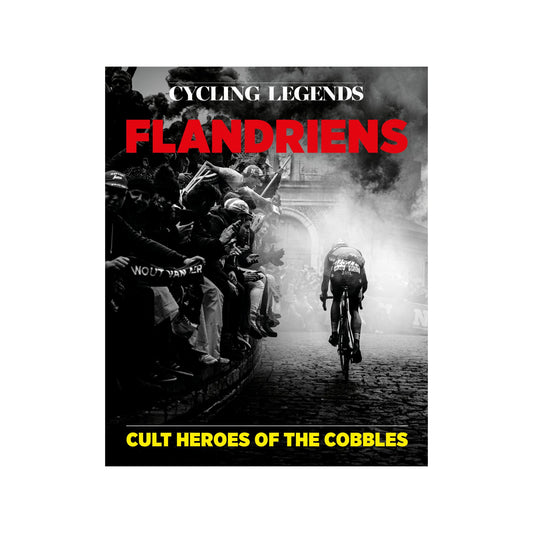

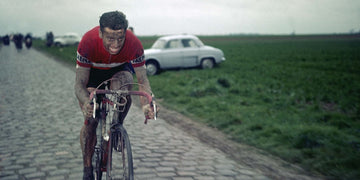
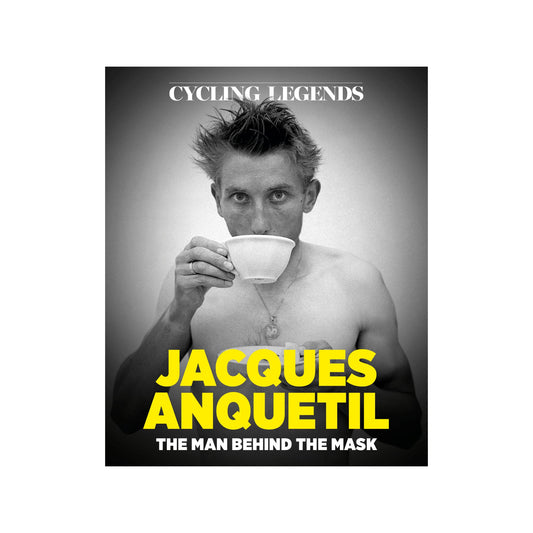


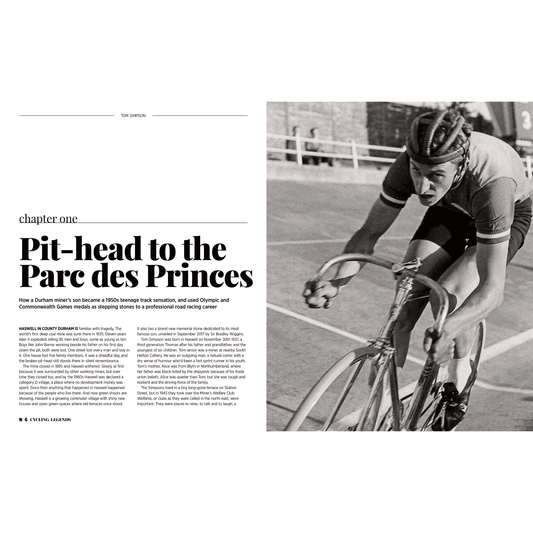
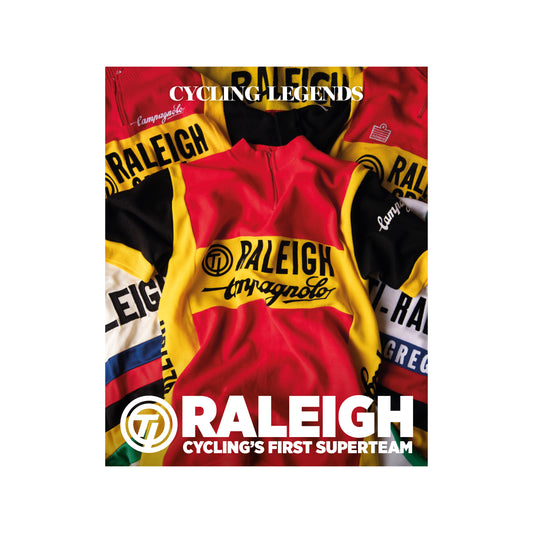
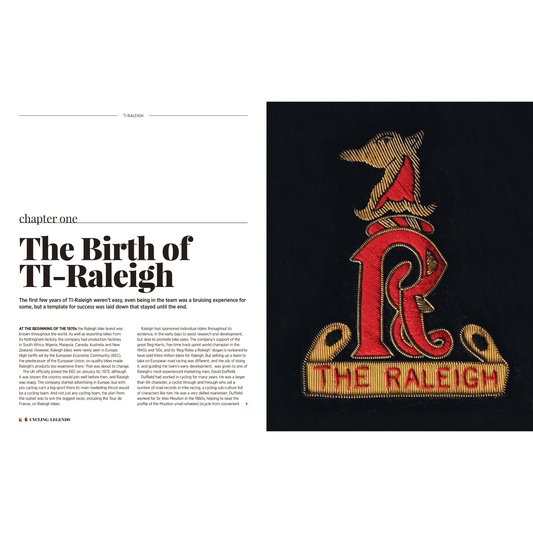
1 comment
A great article.